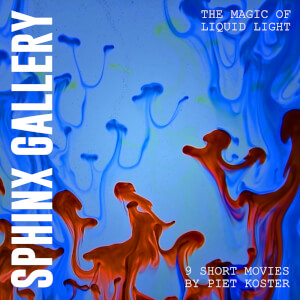Competition
| Student | Experimental |
Experimental 1
Friday 26/03/2021 13:00 - 15:00 - Athens Animfest 2021 Official Screening
Saturday 27/03/2021 01:00 - 03:00 - Athens Animfest 2021 Replay Screening
Total Duration: 01:34:00
- I Call It Home / وطن 02:50Iran 2020
- Rutile cautery / Rútilo cautério 02:27Brazil 2020
- Learn A Little 04:19United Kingdom 2020
- Battle 03:06Turkey 2020
- Circumvolution / Devr 05:05Turkey 2020
- The shudder flies away with open arms, farewell / Le Frémissement s’envole à bras ouvert, Adieu 07:30France 2020
- collage25 04:04Spain 2020
- Covid Loop 01:08Israel 2020
- East Wind / 东风 06:09China 2020
- Earthfall / RAS 06:32Norway 2019
- All Possible Futures 03:51United States of America 2019
- Rain Follows the Plow 02:46United States of America 2020
- Alexander Mosolov. Three Pieces / Александр Мосолов. Три Пьески 02:57Russia 2020
- True Sound Façade 02:30United Kingdom 2020
- Costume Change Forever 08:28United States of America 2021
- Utopia - C 07:38Austria 2020
- Vivant 02:18Argentina 2020
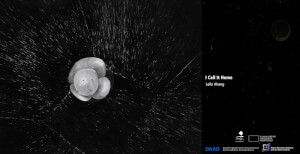
Directed by: Leila Ahang
Screenplay: Leila Ahang
Animation: Leila Ahang
Technique: Ink on paper
Music: Behrooz Shahamat
Production/School: Tehran University Of Art
Dialogue language: Perian
Subtitles language: English
Synopsis: This experimental abstract animation, “I Call It Home”, demonstrates two distinct worlds for a migrant who is born and lives far from her real home. A world is where she was born. It is such as somewhere human lives before the birth, womb. This is growing and the spirit is blown into it. The spirit of human is floating such as a fish in the water. For her, first world is selected as a home to settle down. But slowly she understands the real home is somewhere else. This is another world such as out of mother`s womb. There is strange and frightening place. All things are dark and against her. So she has to struggle to overcome. It takes time but finally she feels tranquility and starts to live new world such as new born baby.

Directed by: Rodrigo Faustini & jpedrinho9
Screenplay: -
Animation: Rodrigo Faustini
Technique: scroll, digital fx, thermography
Music: jpedrinho9
Production/School: Rodrigo Faustini
Dialogue language: -
Subtitles language: English
Photocatalytic individuation. Original gestural abrasive acts on a thermosensible surface are electronically and digitally processed, rendering psychophysical effects of convoluted vague imagery and fuzzy motions. Volcanic mitigations for the senses, red meat-ineffable noise.
Directed by: Michael Hughes
Animation: Michael Hughes
Technique: AfterFX
Music: Keith Duncan, Jos Collins
Visualised waveforms entangle and intertwine to create myriads of rhythmical patterns and shapes.
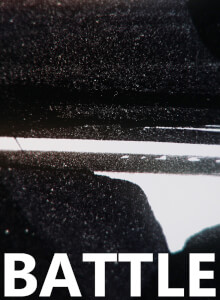
Directed by: Hüseyin Mert Erverdi
Screenplay: Hüseyin Mert Erverdi
Animation: Hüseyin Mert Erverdi
Production/School: Hüseyin Mert Erverdi
Dialogue language: n/a
Subtitles language: n/a
In ‘Battle’ (2020), Shodo-Budo and abstract expressionism; eastern and western sensibilities of calligraphy and painting, put to a Zen like dynamic visual dialogue to evoke a feeling of an inner battle. ‘Battle’ also in a sense a salute to Stan Brakhage’s final film (Chinese Series), made during his own battle with cancer, by wetting a filmstrip with saliva and using his fingernail to scratch marks into the emulsion. ‘Battle’ is about the daily struggle of being in the world. It is dedicated to all the silent and not so silent battles we fought. Budo is a compound of the root bu, meaning "war"; and do meaning "path". Do in the Japanese context is an experiential term in the sense that practice and discipline cultivated through a given art form. In reality modern Budo has no external battle or enemy, it only has an internal battle: an ego that must be fought. For many, Japanese calligraphy (Shodo) amounts to a vital part of Budo training. A spontaneous creative gesture of Shodo also has much in common with abstract expressionism, Shodo is more than mere writing, and its skilled practitioners believe that the rhythm created by the brush reveals the calligrapher's physical and mental condition. Abstract Expressionist artists such as Franz Kline, Jackson Pollock, Willem De Kooning, Lee Krasner, David Smith, AI Reinhardt and Mark Tobey and many others produced works that are reminiscent of calligraphy. Franz Kline especially chose to work in black and white, having been affected by the monochromatic quality of Shodo and the minimalistic aspects of Zen. Japanese artists also noticed what was taking place in abstract expressionist school and were in turn influenced by it themselves. In ‘Battle’ (2020), in order to create this dialogue, thousands of unique calligraphic images created along with the original sound design.
Directed by: Hüseyin Mert Erverdi
Animation: Hüseyin Mert Erverdi
Music: Hüseyin Mert Erverdi
Production/School: Hüseyin Mert Erverdi
All kinds of natural symmetries found throughout nature are governed by fundamental geometric laws. The origin of the word ‘cosmos’ comes from Greek ‘kosmos’ in the sense of ‘ornament’. In many cultures, geometric forms used in ornaments makes the viewer sensitive to the subtle harmonies of the natural order of the world. In Circumvolution (2020), multitudes of geometric visual patterns and forms are created and rendered via a mathematical algorithm in similar fashion to ornaments (traditional geometric patterns with straight lines and curves) which are far from being a mere decoration; the form shows us that what we do not see is more significant than what we do and what we perceive refers to its underlying cause. In the symbolic language of the ornaments, geometric figure of the circle represents the primordial symbol of unity, wholeness and the ultimate source of all diversity. Geometric patterns make the perceiver aware to some degree of the underlying “code” that generated the geometry; in which the resulting patterns, creates an interface to Numinous. In other words, the geometric pattern creates a relay between the perceiver and the infinite. Throughout the ages, mystics and philosophers saw geometry as a means to contemplate and inquire the fundamental laws of nature (or divinity), a kind of emanation was often assumed since antiquity, emanation is a cosmological theory that asserts, all-things "emerge" from an underlying principle or reality. Therefore, the intrinsic qualities of geometric forms, patterns and rhythms, enables the viewer a glimpse of the implicate order of the universe. These symbolic forms implies how different levels of reality relate to one another. According to the renown physicist David Bohm, in our universe, there are only temporary dynamic structures that appear as ‘things’ within limited contexts, constantly transforming into new structures, forms, and processes, ad infinitum. Bohm, observed the behavior of entangled subatomic particles that are far apart but act as though they ‘know’ what each other is doing. He concluded that beneath the quantum level, all matter is interconnected via Schrödinger equation which is one of the fundamental algorithms of nature as far as we know it. The depth and scale of subatomic structure give no indication whatsoever of being exhaustively determined, giving way to ever greater subtlety and complexity with each deeper dive into it. Sound design Circumvolution (2020) takes the ancient notion of Musica Universalis as a conceptual basis for its sound design. Pythagoras proposed that the sun and the planets all emit their own unique hum based on their orbital movements (harmony of the spheres). Subsequently, Plato described arithmetic (number), geometry (number in space), music (number in time), and astronomy (number in space and time) as entangled studies; according to Plato, “more than anything else rhythm and harmony find their way into the inmost soul and take strongest hold upon it.” In 1619, Johannes Kepler published Harmonices Mundi and he believed that this harmony, while inaudible, could be heard by the soul. In essence, the sound design attempts to invoke a celestial music box feeling, laden with complex layers of meaning. History of the genre Many abstract oriented filmmakers like Jordan Belson, Stan Brakhage, Oskar Fischinger, László Moholy-Nagy, Harry Smith, James Whitney, John Whitney, Thomas Wilfred were keen students of theories concerning the spiritual qualities of pictorial abstraction. These systems of knowledge included; Buddhism, Cabbala, Sufism, Alchemy, Mysticism, Intoxication, Synesthesia and they often incorporated discoveries from the fields of modern science.
Directed by: Celia Eid, Sébastien Béranger
Screenplay: Celia Eid
Animation: Celia Eid
Technique: 2D
Music: Sébastien Béranger
Dialogue language: NO
Subtitles language: NO
« Le Frémissement s'envole à bras ouverts, Adieu. » was completed in April 2020, just as the world stood still due to the dramatic covid worldwide pandemic. In front of us was only fear, anguish and death while we were witnessing at the same time profound changes. This film expresses this shattering moment.
Directed by: Luis Carlos Rodríguez
Technique: multiedición.
Production/School: bellasart.es
Dialogue language: English
Subtitles language: no
-The audiovisual language was born, grew and developed from artistic activity. -Audiovisual language is and will be an artistic process that evolves from art and the hand of artist in its two main channels: experimental cinema and video art. -We firmly believe that audiovisual language must continue to evolve from experimentation and artistic activity. -We firmly believe that all creation is always a recreation. The public domain allows us to recreate and recount, again manipulating the time and space of the sequences, (especially those that became unforgettable for us at some point), and, from an audiovisual economy / ecology, move forward with new proposals in this constant process of evolution that must be the audiovisual language.
Directed by: Yuval Haker
Screenplay: Yuval Haker
Animation: Arthur Guttilla, John McColgan, Yuval Haker
Technique: Digital Animation
Music: Micha Gilad
A contagious virus shows us just how connected we truly are. Each panel of the comic is a vignette – separate locations linked through character contagion. The animation ultimately forms a loop for the next wave to begin.
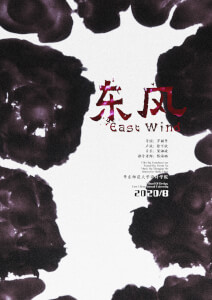
Directed by: Yuanhua Luo
Screenplay: Yuanhua Luo
Animation: Yuanhua Luo
Technique: Yuanhua Luo
Music: Kexin Xu、Xiangjun He
Production/School: School of Design,East China Normal University
Dialogue language: No dialogue
Subtitles language: English
In the Chinese context, “East Wind” can be interpreted as ”the coming of spring”. This film describes the process of winter to spring which compares the process to a baby growing up in a mother’s uterus. By depicting the microscopic perspective of the fetus slowly growing from a single point to complex tissues, it refers to the birth process of small lives in early spring. Those invisible changes like the east wind reflect the poetic nature of the process of spring new life from simple to complex And beauty. Those subtle changes like east wind represent the poetry and beauty of the process which is from complexity to simpleness of new life in spring.
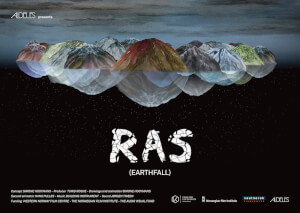
Directed by: Simone Hooymans
Screenplay: Simone Hooymans
Animation: Simone Hooymans
Technique: Hans Pulles
Music: Building Instrument and Jørgen Træen
Production/School: Turid Rogne, Aldeles AS
Dialogue language: No dialogue
Subtitles language: No dialogue
In this experimental animation made of hand-made ink drawings, artist Simone Hooymans explores the transforming powers of crisis. Landscapes, cityscapes and abstract shapes are moving slowly, while growing into an avalanche threatening to destroy everything in its way. Then the destruction is a fact, but from the rubble and chaos emerges a glimpse of a new beginning: Unknown and undefined, but maybe hopeful? The film is a symbolic exploration of current global challenges, yet also an inner journey exploring how a crisis can transform you.
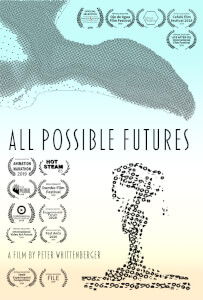
Directed by: Peter Whittenberger
Screenplay: Peter Whittenberger
Production/School: Peter Whittenberger
Set in the Sierra Nevada Mountains and overlooking the scenic Truckee Meadows, “All Possible Futures” is a journey through time that focuses on the possible impact of forgotten nuclear waste storage on three fictitious societies, existing many millennia in the future. The societies consist of: alien colonists repopulating a barren Earth, a species that lives in pure congruence with the environment, and a society that revived life on the planet in the model of the Sumerian city of Uruk, hoping to not make the mistakes of ancient Homo Sapiens. All Possible Futures asks what our responsibility is to future cultures and how our decisions impact a future cannot possibly know.
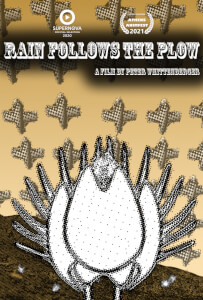
Directed by: Peter Whittenberger
Screenplay: Peter Whittenberger
Dialogue language: English
In a time of crisis, a hero rises among the lek to protect their western habitat. Joining forces with an advanced society, the greater sage grouse of Northern Nevada bring the fight to an insatiable species of landscape encroachers.
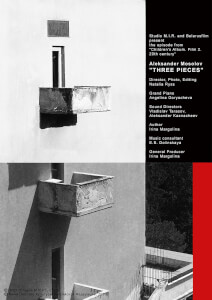
Directed by: Natalia Ryss
Screenplay: Natalia Ryss
Animation: Natalia Ryss
Technique: stop-motion
Music: Alexander Mosolov
Production/School: Irina Margolina, studio M.I.R.
Dialogue language: English, Russian
Subtitles language: English
The experimental film is dedicated to Alexander Mosolov's constructivist period, as well as to the architecture and cinema of this direction and consists of three parts I named intuitively: 1. Shadows 2. Movement 3. Volume The structure of the film is close to constructivism visually and rhythmically. The idea of creating a musical-animated album belongs to Irina Margolina. Classical composers’ works for children are performed by young musicians, students of Jacob Flier Children School of Arts. This experimental movie is one episode from "Children's Album. Film 2. 20th century” I used a stop motion technique based on a series of black&white photos (sometimes colored), mixed collage and animation.
Directed by: Laura N-Tamara
Screenplay: Laura N-Tamara
Animation: Laura N-Tamara
Technique: Live action, 2D digital
Music: Narae Chung
Production/School: The Smalls
Dialogue language: no dialogues
Subtitles language: no subtitles
"True Sound Facade" is a poetic dance and animation film in which a dancer realises their digital self feels truer than their real world self. It plays with the japanese notions of 'honne', the 'true sound', one's innermost feelings, and 'tatemae', the façade one puts on to live in society. It stars Kino McHugh, dancing with and against a colourful animated environment born out of her movements. By combining live-action and animation, the film becomes a celebration of how our inner and outer lives merge with each other in the act of artistic creation. The film was commissioned by the Barbican museum in London, for their "Inside out" short film series.
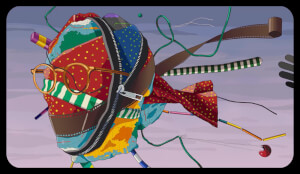
Directed by: John Harlan Norris
Screenplay: John Harlan Norris
Animation: John Harlan Norris, Kaitlyn Kirk, Britt King
Technique: Motion Graphics, Stop Motion, Frame, Vector
Music: by John Harlan Norris
Production/School: University of Kentucky
Dialogue language: none
Subtitles language: none
Costume Change Forever explores the construction of persona through the lens of animated portraiture. Based on Director John Harlan Norris' ongoing series of conceptual portrait paintings, the film uses a variety of animation methods to investigate the complicated and relentless task of presenting self at a time in which our likenesses have become increasingly malleable, fraught, and self-searching.

Directed by: Reinhold Bidner
Screenplay: Reinhold Bidner
Animation: Reinhold Bidner
Technique: Stop Motion, Mixed Media, 2D Computer Animation, Hand Drawn Animation
Music: Reinhold Bidner
Production/School: gold extra
Dialogue language: English
Subtitles language: English
"Utopia - C" is an experimental animated short film/animated documentary about my personal experiences and hometown-observations in this strange time that we are going through right now: On March 4th 2020 by incident I happened to be in my hometown Salzburg/Austria. Then things became weird and "coronoid". So I stayed and on March 15th I decided to shut down/shut up in Salzburg to work on these personal/animated hometown coronicles, that deal with some places I grew up with but also with some of my thoughts and observations between March and June 2020. Supported by gold extra, Kultur Land Salzburg, Kultur Stadt Salzburg © Reinhold Bidner
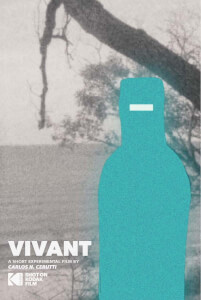
Directed by: Carlos Nahuel Cerutti
Technique: 2d and Rotoscoping
Dialogue language: N/A
Subtitles language: N/A
Vivant is a short experimental film that was born out of an interest in the intersection between the analogue and the digital. It is about our relationship with what surrounds us, the danger of curiosity and blending together with the unknown.
Back
 ATHENS ANIMFEST
ATHENS ANIMFEST

